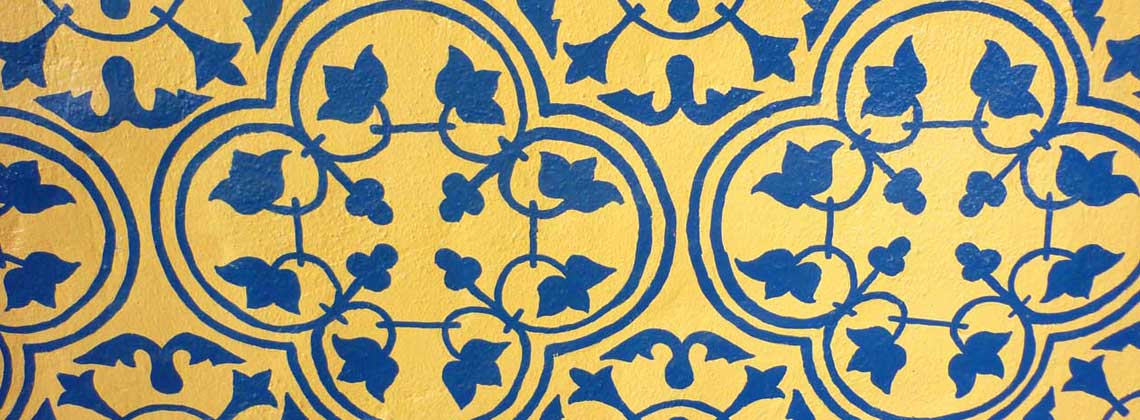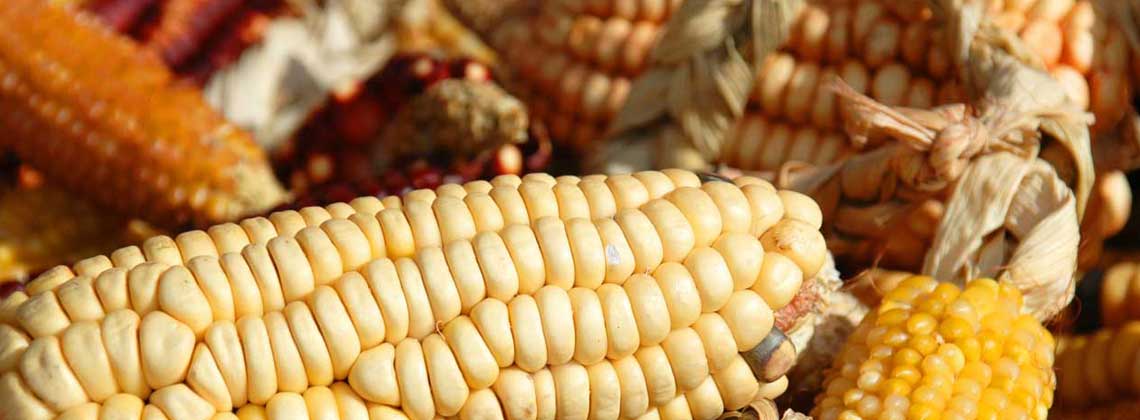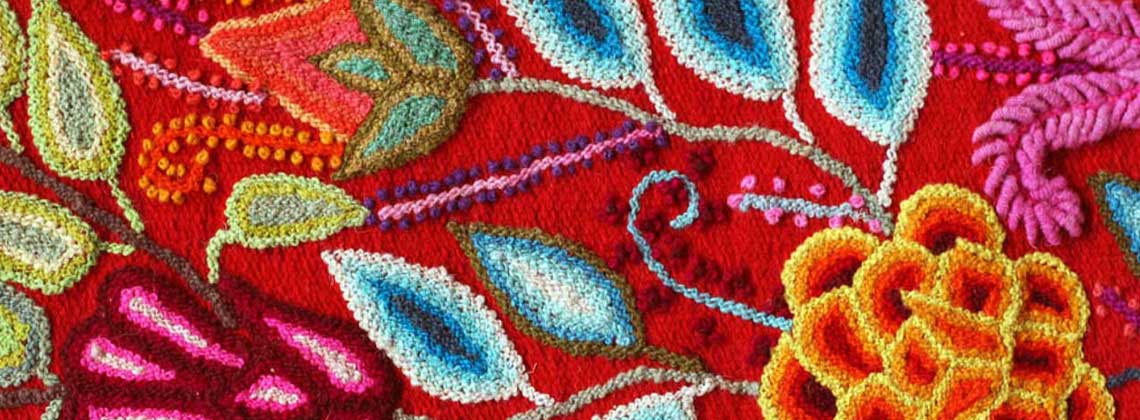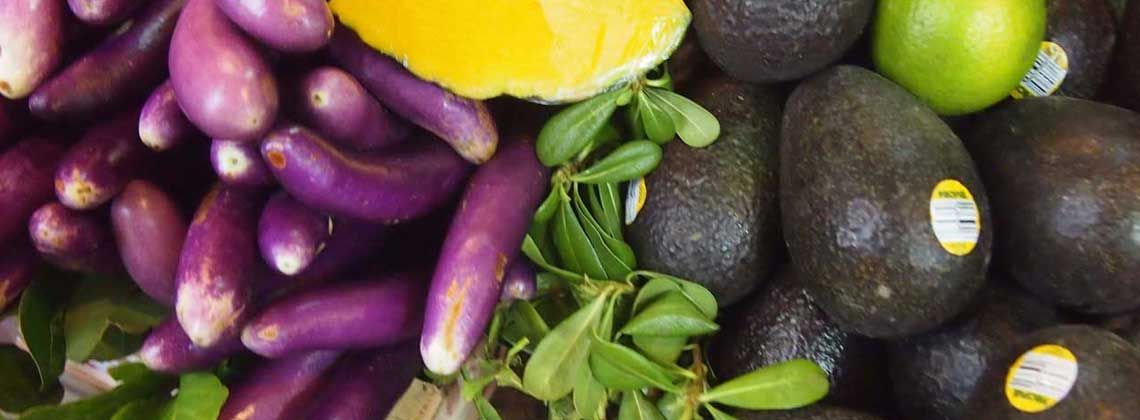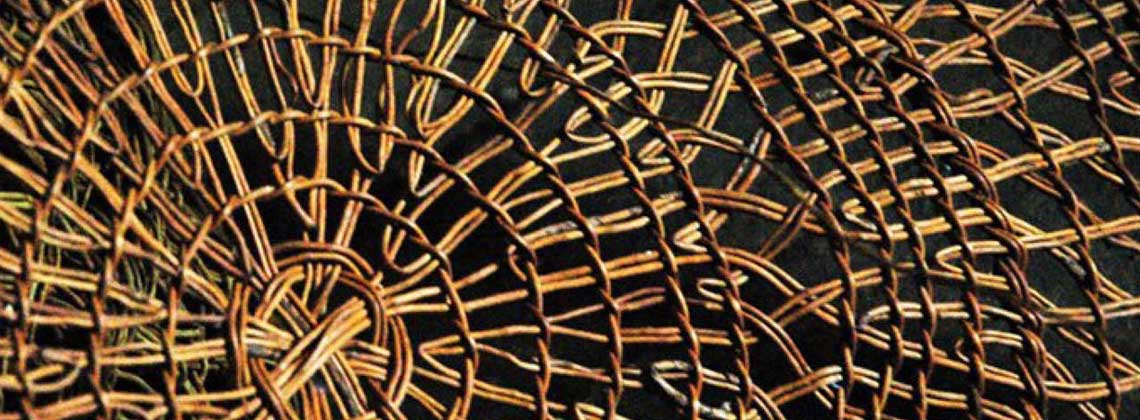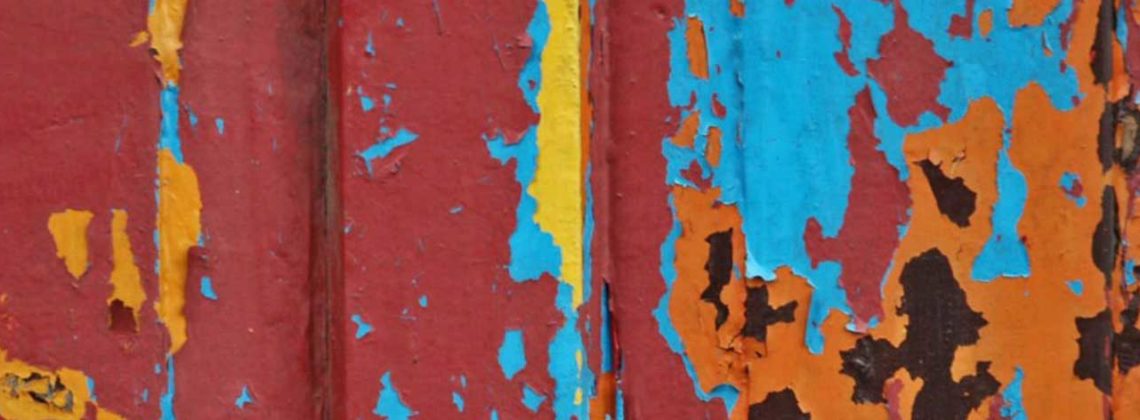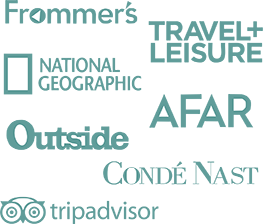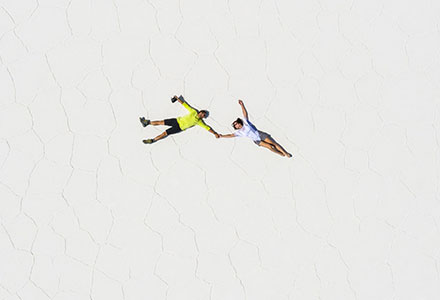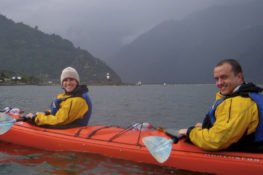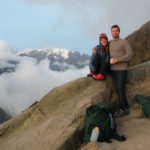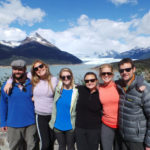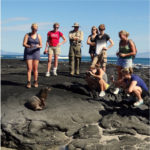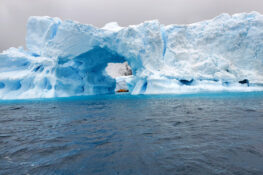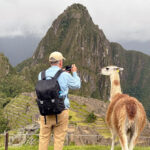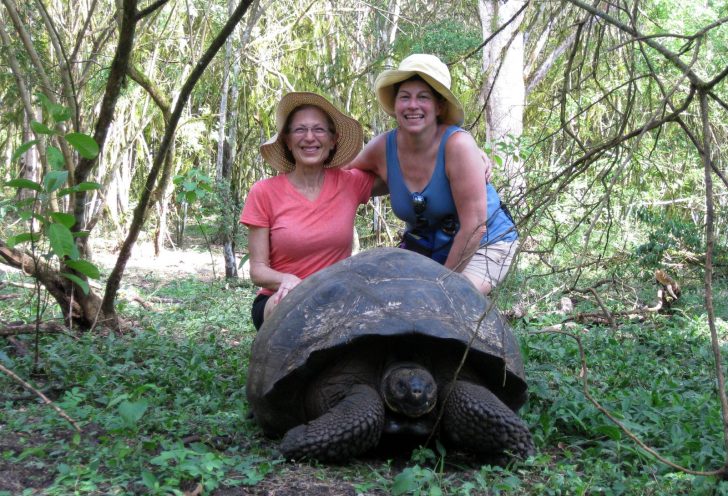
To celebrate her birthday, Joy and her travel companion Randi flew to South America for a custom Galapagos Islands and Ecuador trip with visits on the mainland to the Amazon and the Highlands.
Arriving in Quito, the two intrepid travelers began their visit in Ecuador’s Amazon region. At Napo Wildlife Center, they stayed deep in the jungle. During their time in one of the most biodiverse regions on Earth, they explored the Yasuni National Park, searched for wildlife, and learned about the traditions of indigenous cultures all while staying in the comfort of a beautiful lodge.
Returning to the capital, Joy and Randi discovered the highland region. While here, they stayed at an historic hacienda, looked for a bargain at the Otavalo market (the largest market in Latin America), and explored the colonial capital city. They also did a bit of hiking in the surrounding mountains before they were off to the Galapagos Islands for an 8-day/7-night cruise.
Keep reading for a more in-depth look at their itinerary and a peek at some more of their photos!
Do you want to travel to Ecuador or the Galapagos? We’re regional experts here at Knowmad Adventures and pride ourselves in building custom trips that are a perfect fit for our travelers. If you’re interested in crafting an adventure combining several regions in Ecuador but this particular itinerary doesn’t strike your fancy, don’t hesitate to reach out to our Trip Specialists at 612-394-2894 or [email protected] to begin planning your trip today!
GALAPAGOS ISLANDS + Ecuador Adventure TRIP
Day 1 USA – Quito
You will fly from the USA to Quito arriving most likely in the evening. Upon your evening arrival to Quito you will be met at the airport and transferred to your hotel, conveniently located near the airport for your morning flight to the Amazon.
- No meals – Hosteria San Jose de Puembo
Day 2 Quito – Napo
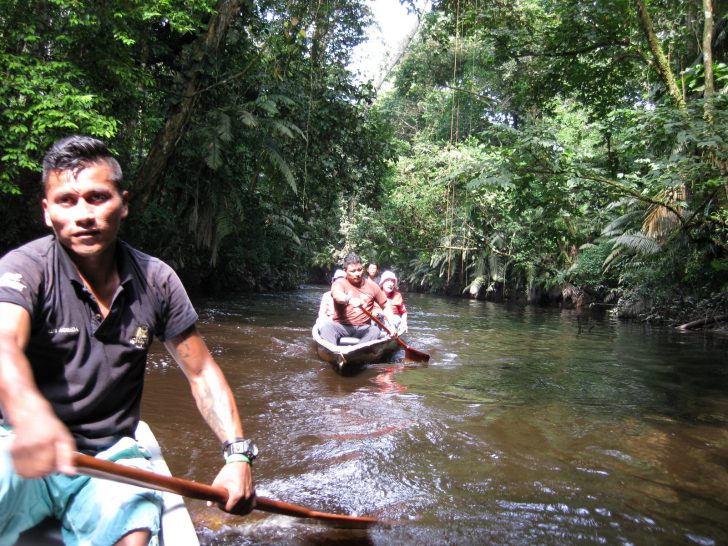
Getting an early start to the day, after breakfast you will be picked up at 8:30 a.m. and taken to the Quito airport for a short flight to Yasuni National Park in the Amazon Basin. A Napo Wildlife Center representative will meet you at the domestic departure gate with your boarding pass and help you check-in for your flight. After arriving to the dock, board a large, motorized canoe for a scenic two-hour trip downriver. Transfer to smaller dugout canoes and be paddled up the black water creek to the Napo Wildlife Center – an environmentally friendly lodge that offers a luxurious experience deep in an isolated setting, perfect for spotting the flora and fauna the Amazon is famous for. Along the way it’s possible to see a variety of monkey species as well as large birds like toucans, parrots and macaws. After an hour or so the creek opens to an overwhelming view of the Anangu Lake where perched along the banks is the Napo Wildlife Center. Enjoy a welcome drink and briefing while your luggage is transferred to your private jungle cottage. Your stay at the lodge includes gourmet meals.
- B, L, D – Napo Wildlife Center
Day 3 Napo Wildlife Center
Rise early to reach one of Ecuador’s best parrot clay licks. A total of 11 species of parrots, parakeets and macaws can be seen at the naturally created feeding ground. Later, hike along a forest trail to visit the Kichwa community of Anangu, meeting villagers and learning of their culture, customs and traditions. Return to the creek and hike through the forest for a half hour until arriving to the second parrot clay lick where you can find different bird species. Enjoy a tasty picnic lunch at the observatory before a late-afternoon return to the lodge.
- B, L, D – Napo Wildlife Center
Day 4 Napo Wildlife Center
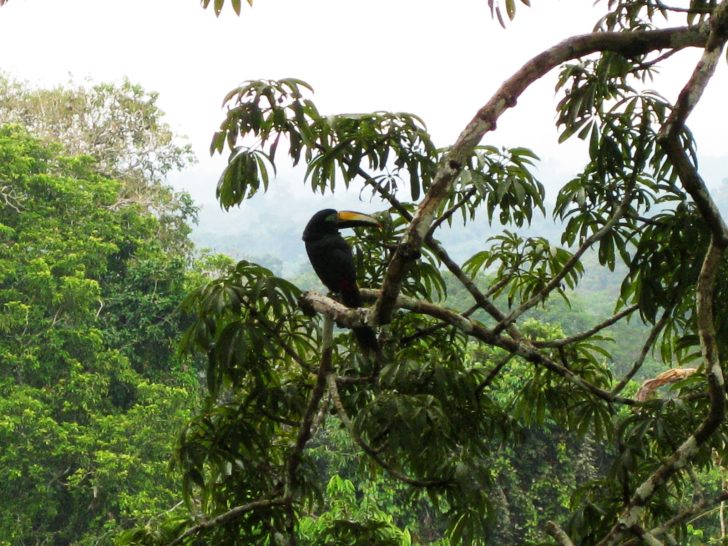
A short morning hike on a jungle trail takes you to a 120-foot canopy tower. As you ascend the 12-floor tower, pass through different levels of the forest emerging on top of a huge ceiba tree. Cross on to a platform built into the tree and view the Amazon as only the birds do. Flocks of colorful tanagers pass right through the canopy, blue and yellow macaws soar past, spicer monkeys search for fruit in nearby trees, two species of toucans make regular early-morning visits, and the life of the forest canopy opens before you. Birds virtually impossible to see from the forest floor are suddenly right beside you, oblivious to your presence. Have a gourmet lunch full of fresh local products back at the lodge, and enjoy an afternoon hike through primary forest watching for a variety of lizards and amphibians, colorful manakins and endemic golden mantle tamarin monkeys. Explore the lake and creeks by dugout canoe with great possibilities of seeing a giant otter (an extremely endangered species) and take in an Amazonian sunset.
- B, L, D – Napo Wildlife Center
Day 5 Napo – Quito
Watch for giant otters, monk saki monkeys and a variety of other rare birds while canoeing through the lake and black water creek to the Napo River. After using the restrooms, return by motorized canoe and onward to the Coca airport for your flight back to Quito. Upon arrival in Quito you will be met by a Knowmad Adventures representative and begin the 2-hour drive north to Otavalo. En route stop at a historic hacienda and an adjacent rose plantation learning of their cultivation and worldwide exportation. Enjoy a traditional Ecuadorian lunch before arriving to your charming accommodations at a traditional Hacienda.
- B, L – Hacienda Cusin
Day 6 Otavalo, Peguche & Cotacachi
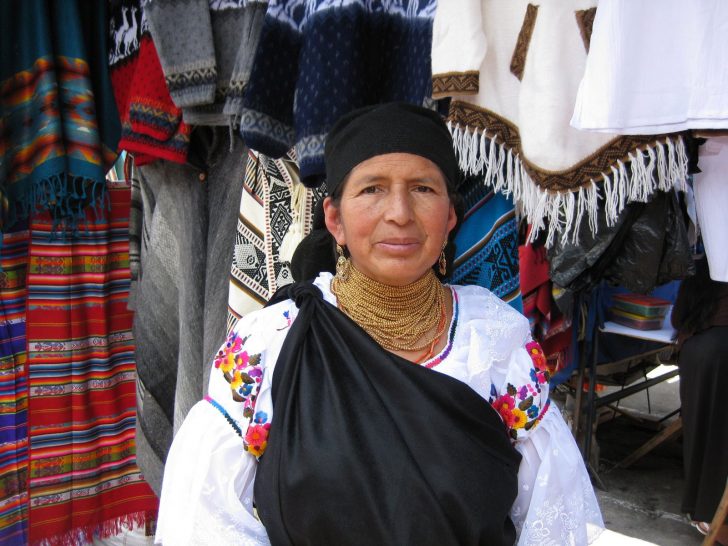
Today you will be picked up at 9 a.m. and visit the Otavalo market, the biggest and most important indigenous market in all of Latin America. The colorful main handicraft and textile market spills into the streets from the central Plaza de Ponchos whilst the cacophony of the animal market is kept to the outskirts of town. The produce market impresses with the sheer number and color of the locally cultivated fruits and vegetables. The friendly Otavaleños are more than happy to talk about their crafts and traditions and will expect you to haggle a bit on the price.
After lunch you’ll continue to the Cotacachi-Cayapas ecological reserve for a visit to the interpretation center, and a stunning view of the deep blue waters of the Cuicocha crater lake, at the foot of Mount Cotacachi. After a short hike you’ll stop at the picturesque town of Cotacachi, famous for its leather products. Enjoy a relaxing evening at your hacienda.
- B, L – Hacienda Cusin
Day 7 Otavalo – Quito
Departing your hacienda at 10 a.m., begin the drive back to Quito. Before arriving to your hotel, you’ll stop to visit the fascinating Intiñan museum, dedicated to the promotion and study of the nations that inhabited the equatorial area. Arrive to your hotel for a relaxing evening in Quito.
- B – Casona de la Ronda
Day 8 Quito
Today you will be picked up at 9:30 a.m. to enjoy a half-day guided tour of Quito as you walk down quaint cobblestone streets lined with brightly colored colonial houses and balconies dressed in flowers. Visit the Plaza de la Independencia and the impressive La Catedral de Quito, one of the oldest cathedrals in South America. Then see the Presidential Palace along with other historically and architecturally rich buildings lining and surrounding the square. Visit some of the most important churches built around the 16th and 17th centuries, including the monastery of San Francisco, which was started just five days after the founding of Quito in 1534. Enjoy the afternoon to explore independently.
- B – Casona de la Ronda
Day 9 Quito – Galapagos
AM: Flight to Galapagos from Quito Airport
You will be picked up at your hotel at 4 a.m. in the early morning and taken to the airport in accordance to your flight to the Galapagos. The flight from Quito to the Galapagos is approximately 2 ½ hours on a Boeing 727. Travelers will pass through an airport inspection point to insure that no foreign plants or animals are introduced to the islands. Upon arrival in the Galapagos your park entrance fee of $100 and $20 for the INGALA card, which is an identity card that you need, will have been pre-paid. Guides will meet you, collect your luggage, and escort you on the short bus ride to the harbor. Motorized rafts, called ‘Pangas’ will transport you to the M/C ANAHI and our crew will welcome you onboard. After departure and lunch, you’ll have your first island visit.
PM: Santa Cruz Highlands
While journeying across Santa Cruz into the highlands, you’ll be delighted by the island’s variety of life and geology. Beginning at the coast and traveling across Santa Cruz the road departs from Puerto Ayora climbing through the agricultural lands and into the mist covered forests. Santa Cruz possesses all of the various life zones present in the archipelago. As you travel through these zones birders are enchanted. Whether it’s the bright red feathers of a vermillion flycatcher or one of Darwin’s Finches, almost every bird present in the islands can be found here. Santa Cruz offers excellent opportunities for viewing wild Galapagos Tortoises. Tracking tortoises is not the only exciting activity to be found in the highlands. There are also plenty of lava tubes, sinkholes and craters to explore. Theses eerie formations offer a fascinating hike into the belly of the island to view its volcanic make-up.
- B, L, D – Anahi Catamaran
Day 10 Isabela
AM : Sierra Negra Volcano.
Isabela Island is the largest and one of the youngest islands in the Galapagos archipelago. You will land in Puerto Villamil and head up to the highlands to the Sierra Negra slope, where you will do some hiking on uneven terrain until arriving at the Sierra Negra volcano rim. Sierra Negra is the second widest crater in the world. From this viewpoint, you’ll have fantastic views of the 6 x 5-mile-wide crater, the rest of the volcanoes, and Perry Isthmus, a 12 Km wide lava field. From here you can hike to Chico Volcano to view the striking lava formations, examples of the geological occurrences that have created the Galapagos Islands.
PM : Breeding Center “Arnaldo Tupiza”
The Tortoise Breeding Center of Isabela is located 1.5 km from Puerto Villamil. At this Breeding Center, populations from South Isabela (Sierra Negra Volcano, Cerro Azul): Cazuela, Cinco Cerros, Roca Union, San Pedro, Tables and Cerro Paloma have been reproduced in captivity. In total there are 330 between juvenile and adult tortoises.
The Wetlands
The visitor site “Wetlands”, is a complex of trails that include the following sites: Cerro Orchilla, a lookout point to see the bay and the town of Puerto Villamil, Sierra Negra Volcano, the Cerro Azul Volcano, islets and rocks. These sites form spectacular scenery. The main attraction of these sites is the variety of flora and fauna that can be observed.
- B, L, D – Anahi Catamaran
Day 11 Isabela
AM: Punta Moreno
Punta Moreno is located on the north coast of Isabela between the Sierra Negra and Cerro Azul volcanoes. The trail runs along lava flow Pahohoe (solidified lava in the form of an accordion) into a complex of coastal lagoons. Its main attractions are several species of birds, which can be found around the lakes and mangroves. You may also get the opportunity for some snorkeling.
PM: Elizabeth Bay
This is a marine visitor site. The excursion is carried out in a zodiac and so there is no landing point. Your zodiac ride starts with a visit to the Marielas islets where there is the largest and most important penguin colony in the Galapagos Islands. The excursion continues into the cove that is surrounded by red mangroves where you can admire their red roots and green leafs. It is here that you are able to observe sea turtles, flightless cormorants, spotted eagle rays, golden rays, brown pelicans, and sea lions. Frequently visitors have been able to see Galapagos hawks soaring overhead while schools of Pompano and Dorado fish swim below.
- B, L, D – Anahi Catamaran
Day 12 Isabela
AM: Urbina Bay
South from Tagus Cove and still on the west coast is Urbina Bay. It is an easy wet landing on a gentle sloping beach. This area is very interesting in that it is a perfect example of the geological activity of the islands. The waters of the bay are a good place to snorkel and see turtles and rays Ashore is a short trail leading to a coral reef, which is evidence of an uplift from the sea which occurred in 1954.
From here it is easy to reach the Alcedo and Darwin volcanoes. You can see large colored land iguanas here and the possibility of seeing giant Galapagos turtles, flightless cormorants, blue-footed boobies, Galapagos penguins, pelicans, and marine iguanas is excellent.
PM: Tagus Cove
A tour along the cliffs in a zodiac will give visitors a good chance to see the Galapagos penguin, the flightless cormorant and other sea birds. You may get more opportunities for snorkeling. From the landing dock it is about a 30 minute hike along the trail up to the top of the cliff from where you can view Darwin Lake, an uplifted ultra saline lake saltier than the sea. You can also see several volcanoes from this location. Look carefully at the graffiti on the surrounding cliffs of the cove. Pirates, whalers and buccaneers left the graffiti in past centuries.
- B, L, D – Anahi Catamaran
Day 13 Fernandina – Isabela

AM: Espinoza Point
Fernandina is the third largest island in the archipelago and has a single visitor site: Punta Espinoza, located at the northeastern tip of the island. Just across Tagus Cove, is a visitor site where some of the unique species of The Galapagos can be seen. Marine iguanas conglomerate in larger groups than on any other island. They bask around in the sand, swim near the shore, and sometimes block the way at the landing dock. Among the unique species found here, is the flightless cormorant. A bird that due to the lack of predators had to adjust their way of survival and perfect their skills for finding food in the ocean. Their wings, tails, and feet progressively adapted for swimming. To see these birds is to witness evolution happening right in front of you.
PM: Vicente Roca Point
Located at the ‘mouth’ of the head of the sea horse, which forms the northern part of the Galapagos Islands, is Punta Vicente Roca. Here the remnants of an ancient volcano form two turquoise coves with a bay well protected from the ocean swells. This spot is a popular anchorage from which to take panga rides along the cliffs that are the remains of the volcano or explore a partially sunken cave at the water’s edge. Masked and blue-footed boobies sit perched along the point and the sheer cliffs, while flightless cormorants inhabit the shoreline.
The upwelling of cold water currents in this part of the Galapagos give rise to an abundance of marine life which, in combination with the protection of the coves, make Punta Vicente Roca one of the archipelago’s sought after dive spots. One cove is only accessible from the sea by way of an underwater passage. The passage opens to calm waters of the hidden cove where sea lions like to lie on the beach having traveled along the underwater route. The entire area of Punta Vicente Roca lies on the flank of 2,600-foot Volcano Ecuador. This is the Galapagos Island’s sixth largest volcano.
- B, L, D – Anahi Catamaran
Day 14 Santiago & Rabida
AM: Puerto Egas.
The excursion to Puerto Egas with its black sand beaches leads to one of the more rewarding visits of the Galapagos. The island was the site of a small salt mining industry in the 1960s, one of several unsuccessful attempts to commercialize the Galapagos. A hike inland to a salt crater is an excellent opportunity to see land birds such as finches, doves, and hawks. A walk along the rugged shoreline, especially at low tide, will allow us to observe many marine species as Iguanas bask on the rocks and sea lions lie in the tide pools. At the end of the trail there is a series of grottoes or sea caves where fur seals and night herons are regularly found resting on the shady ledges. For many, this is the only opportunity to see the Galapagos fur seal, once thought to be on the verge of extinction.
PM: Rábida
Rábida Island is unique because the red color of the rocks and sand. The volcanic material in this island is very porous and external factors such as rain, salt water, and sea breeze have acted as an oxidizing agent. A short walk along a trail leads you to a coastal lagoon behind the beach which allows you to observe the land birds such as finches, doves, yellow warblers, and mocking birds. At the lagoon there is a colony of flamingos.
- B, L, D – Anahi Catamaran
Day 15 Chinese Hat & Bartolome
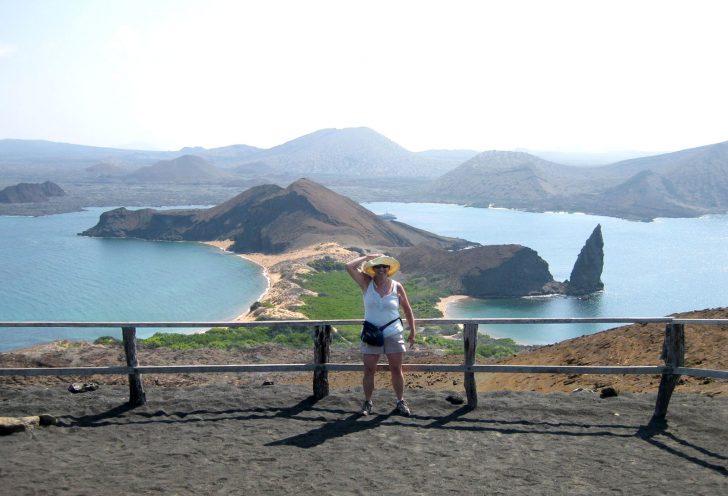
AM: Chinese hat
This is a small islet (1 sq km) located just off the southeastern tip of Santiago Island. On the west side you can see lava formations, formed under the sea and raised upward. This is why coral heads are found on the lava. This is an excellent visit for interpretation of geological features such as lava tubes and flows. The landscape is covered by sea lions, marine iguanas, and Galapagos penguins.
PM: Bartolome Island
A small barren island that is located across from Sullivan Bay, off James Island, Bartolome has two main visitors’ sites. The first site offers the possibility to climb to the summit of the island, from where visitors can observe a variety of volcanic formations including lava bombs, spatter and cinder cones, lava flows, and lava tubes. The moon like landscape provides one of the most scenic panoramas in the archipelago. At the second site, visitors have the chance to relax on a beautiful beach, which offers great snorkeling opportunities. Multi –colored fish and occasionally penguins and sea turtles have been seen at the base of the tall pinnacle rock, which dominates Bartolome’s landscape. A short walk across to Bartomome’s second beach, where swimming is strictly prohibited, visitors can see white-tipped reef sharks at a safe distance swimming along the shore.
- B, L, D – Anahi Catamaran
Day 16 Santiago & Rabida
AM: North Seymour
This is an uplifted (as opposed to volcanic) island and is generally flat and strewn with boulders. There are good nesting sites here for a large population of magnificent frigate birds. Blue-footed boobies perform their courtship dance in the more open areas and swallow-tailed gulls perch on the cliff edges. Despite the tremendous surf that can pound the outer shore, sea lions haul out onto the beach and can be found bodysurfing. After the morning excursion you will be taken to the airport for your flight to the mainland. Upon arriving in the Quito airport you will be responsible for collecting your bags and checking in for your overnight flight home.
- B
Day 17 Arrive Home
Hasta Pronto, Knowmad Adventurers!
 Knowmad Adventures works closely with independent-minded travelers creating innovative trips to South America. Our specialists in Patagonia, Chile, Machu Picchu, Peru, Argentina, the Galapagos Islands, Ecuador and Antarctica are eager to collaborate and create a trip as unique and authentic as you are, and our experienced South American operations team guarantees you get an insider’s perspective, superior values, and a flawlessly-operated trip.
Knowmad Adventures works closely with independent-minded travelers creating innovative trips to South America. Our specialists in Patagonia, Chile, Machu Picchu, Peru, Argentina, the Galapagos Islands, Ecuador and Antarctica are eager to collaborate and create a trip as unique and authentic as you are, and our experienced South American operations team guarantees you get an insider’s perspective, superior values, and a flawlessly-operated trip.



